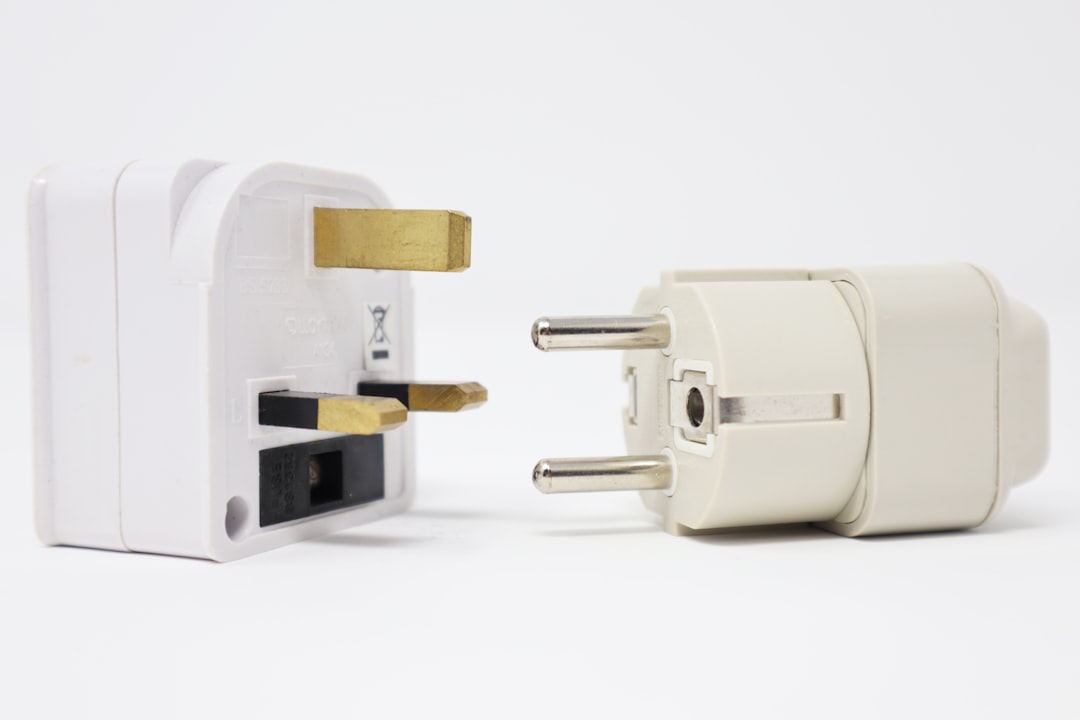Traveling somewhere new is exciting. Different culture, food, sights, and… plugs? Yes! If you’ve ever tried to charge your phone abroad, you might have faced a shocking reality — your plug doesn’t fit. That’s where travel adapters and GaN chargers come in. Let’s break it down and make your next trip a little less *charge-frustrating* and a lot more *plug-and-play*.
Why outlets are different
Every country seems to have its own way of doing electricity. Some places use 110 volts. Others use 220 volts. Some have two flat pins. Others have three round pins. It’s all a little chaotic.
If you try to plug your U.S. charger into a European wall, it just won’t fit. That’s why adapters exist.
What’s a travel adapter?
An adapter is a simple device. It lets your plug fit into a foreign socket. Think of it like a translator, but for plugs.
Important: Adapters don’t change voltage. They only change the plug shape.
If your device can’t handle the voltage in the country you’re visiting, you’ll also need a voltage converter. But most modern gadgets (like phones and laptops) can handle different voltages. Always check the label on your charger. If it says something like 100–240V, you’re safe.
Types of plug shapes
There are 15 types of plugs used around the world. But don’t worry — most travel adapters group the main types together.
- Type A/B: Used in the US, Canada, Japan
- Type C/E/F: Europe (except UK), South America, parts of Asia
- Type G: UK, Ireland, Singapore
- Type I: Australia, New Zealand, China
A universal travel adapter usually covers all these. One plug, many countries — that’s the idea.

What makes a good travel adapter?
Not all adapters are created equal. Some are cheap and break easily. Others are bulky and take up too much space. Here’s what you want to look for:
- All-in-one design: Fewer pieces to lose
- Multiple USB ports: Charge multiple devices at once
- Built-in fuse: Helps prevent damage from power surges
- Certifications: Like CE or FCC — means it’s passed safety tests
Enter GaN: the charging upgrade
GaN stands for Gallium Nitride. It’s a material used in some modern chargers. And it’s kind of a game-changer.
Why? Because GaN chargers are:
- Smaller: Tiny but mighty
- Faster: They support fast charging
- Cooler: They don’t overheat easily
GaN allows more power to fit into a small space without getting too hot. That means you can power your laptop, phone, and even a tablet with one small adapter. Perfect for travel!
How GaN chargers help travelers
If you’ve ever traveled with multiple chargers, you know the struggle — tangled cords, heavy bricks, and not enough outlets in your hotel room.
GaN chargers simplify all that. A single GaN charger can often replace 2 or 3 regular ones. Less clutter, more charge.
Image not found in postmeta
Many GaN chargers now also include multiple USB-C and USB-A ports. That lets you charge your smartphone, camera, tablet, and headphones all from a single brick. It’s like having a power station in your pocket.
USB-C: the modern hero
Most GaN chargers come with USB-C ports. And that’s a good thing. USB-C is becoming the new standard. It’s faster, smarter, and reversible (no more flipping the plug three times).
If you’re still using the big USB-A cables, it might be time to switch. USB-C supports faster charging and can even deliver power to laptops. Perfect for on-the-go.
Tip: Always carry a couple of good quality USB-C cables. Ones that support Power Delivery (PD) — that’s what allows fast charging.
Best combo for your trip
So, what’s the ideal charging kit for a new travel adventure?
- A universal travel adapter
- A compact GaN charger with USB-C and USB-A
- A couple of strong, braided USB-C cables
Bonus: If you’re going to a remote area, consider a small power bank too (especially one that recharges via USB-C).
Don’t forget local quirks
Different places might have weird power quirks. In some countries (like the UK), there may be switches on the outlet itself. In others, the power grid might not be super stable.
Using a travel adapter with surge protection can help keep your devices safe. Also, make sure your GaN charger is dual-voltage compatible. Most are, but always double-check.
Real-life scenario: charging in Paris
Let’s say you’re headed to Paris. Beautiful views, delicious pastries… and Type C plugs.
Here’s what you do:
- Bring a universal adapter — it will convert your U.S. plug to Type C.
- Pack a GaN charger with USB-C ports.
- Use that single charger to top off your phone, laptop, and camera as you sip coffee by the Eiffel Tower.

Simple. Efficient. And no fried electronics.
Extra tips and fun facts
- Most airports have multi-standard outlets. So you can charge even if you forgot your adapter (but don’t rely on this).
- Some hotels lend adapters for free. Ask at the front desk!
- In airports and cafes, look for USB outlets. It saves you the trouble of plugging anything into the wall.
- Most GaN chargers are airplane friendly — you can carry them in your hand luggage without a problem.
One last thing…
If you’re a frequent traveler, get a high-quality adapter. One that lasts. Same goes for your GaN charger. Investing in good gear means fewer problems on the road. And more time enjoying your trip.
So, the next time you get ready to jet across borders, pack smart. Let GaN power your gadgets and a trusty adapter connect you to the world. Easy, right?
Now go forth and travel — fully charged!
